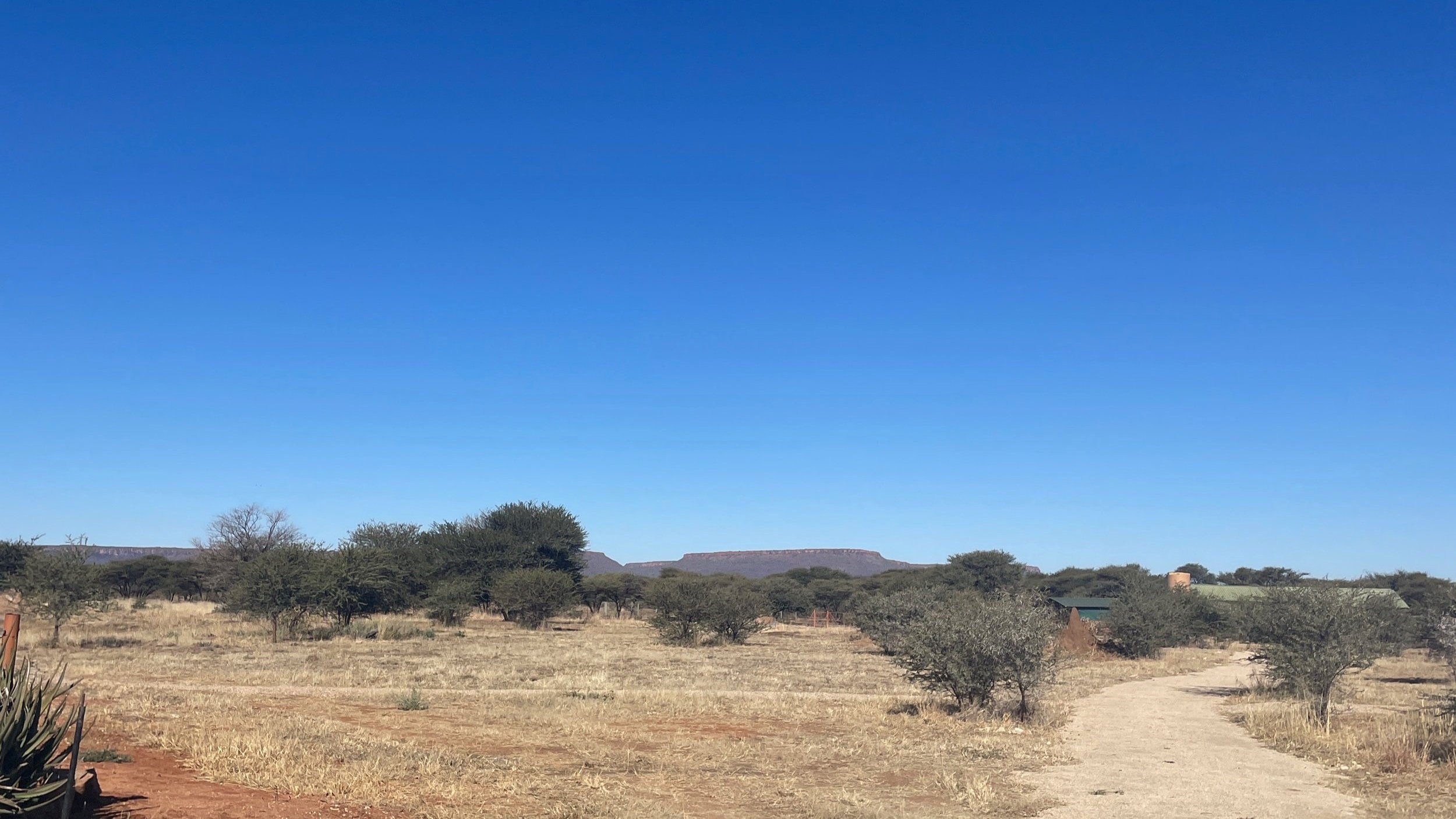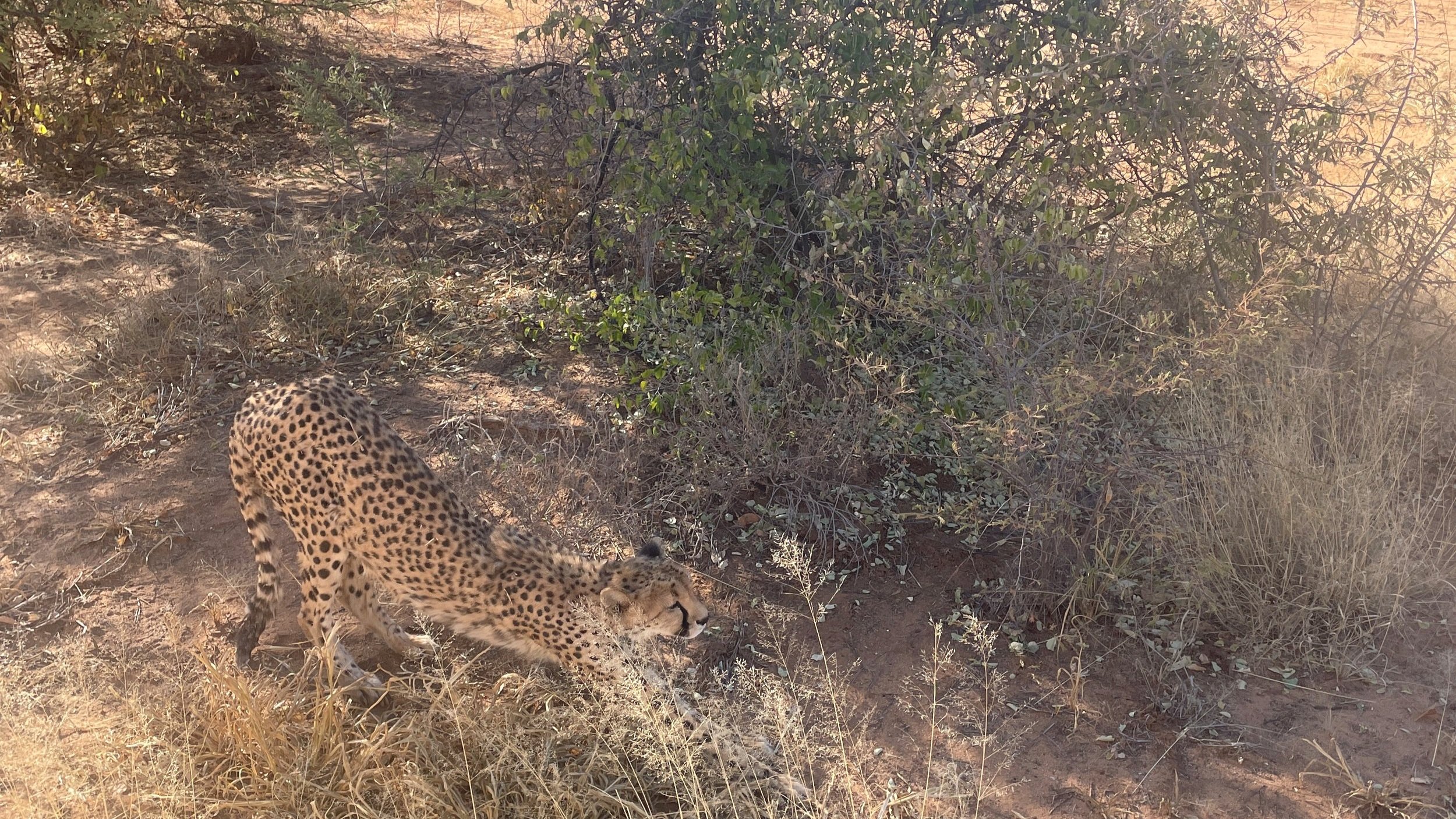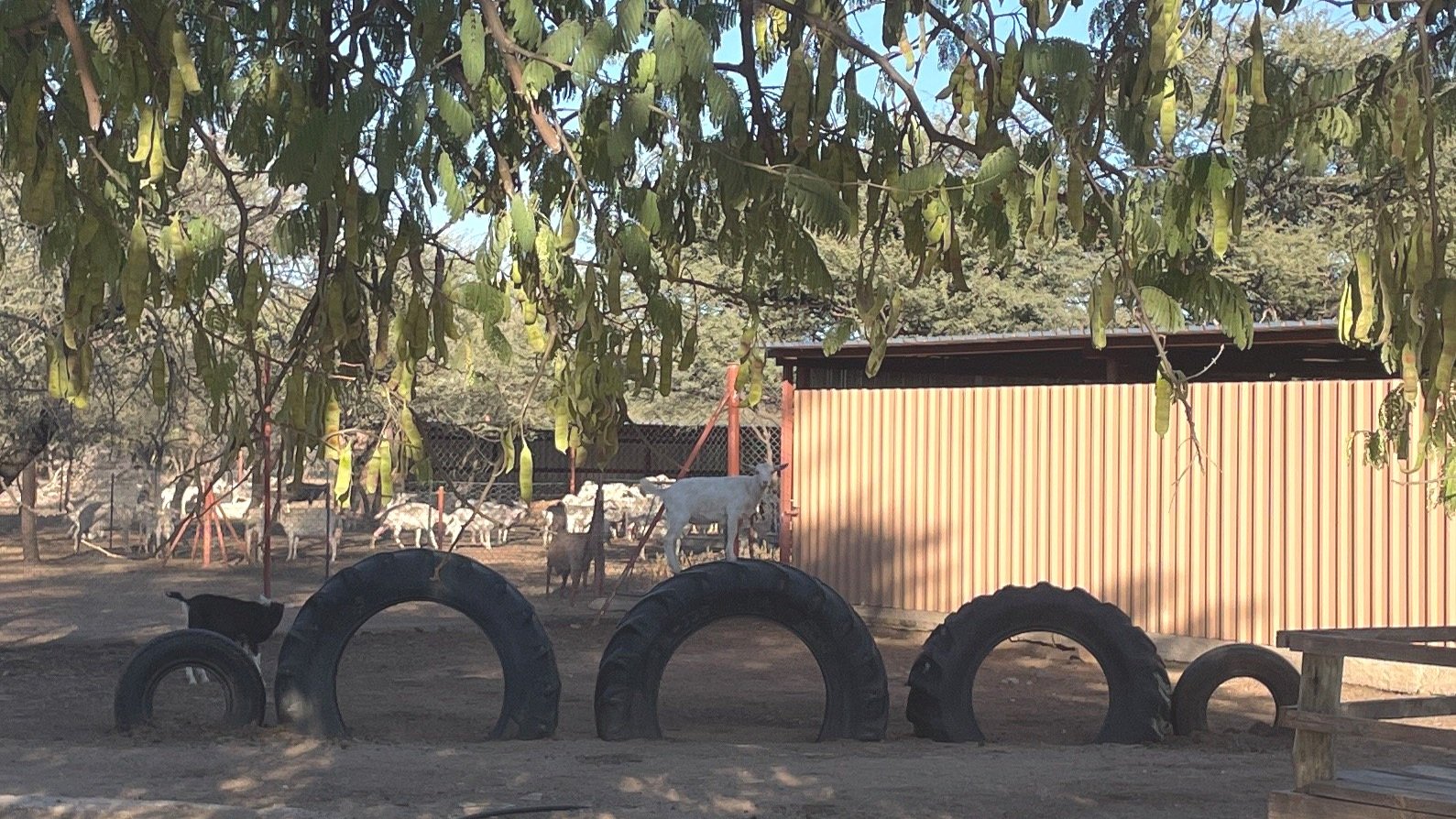A review of the Cheetah Conservation Fund and Cheetah Lodge
On our last full day in Namibia we stayed at Cheetah View Lodge on the grounds of the Cheetah Conservation Fund in Otjiwarongo. We arrived just after feeding time and were introduced to three of the resident cheetahs, and given a background on how the animals end up at the conservation.
How do cheetahs end up at the conservation?
Namibia criminalised keeping cheetahs as pets, so a number at the conservation were confiscated from people who owned them illegally. Others were orphaned, and some have been found injured and are being rehabilitated so they can be released back into the wild.
Sadly, cheetahs who arrive at the conservation before the age of 6 months will never be able to be released, as they don’t have the survival skills that they would have learned from their mothers during this vital time in their lives.
Breeding in captivity is illegal in Namibia and the 37 cheetahs at CCF have a huge amount of space to roam. Those being released back into the wild are kept some distance away from the main site to prevent them getting used to humans.
What is there to do at the Cheetah Conservation Fund?
We went on an afternoon Cheetah Drive, where we learned more about the work CCF does, and met five female cheetahs who live together in a large area slightly further away from the others. As well as looking after and rehabilitating cheetahs, CCF helps educate farmers about cheetahs and even breeds dogs to help protect their livestock which prevents cheetahs being shot by farmers. So at the end of the tour, we were taken to meet a few of the Kangal Shepherd Dogs, and also some goats.
The following morning, before heading to the airport, we went on the Cheetah Run where three cheetahs were given their morning exercise. As they have no reason to chase prey, these cheetahs can be quite lazy so they chase a lure each morning to ensure that they run more than they otherwise would.
CCF is an amazing place to stay and so educational and informative.
What work do they do at CCF?
As well as helping to rehabilitate injured or sick cheetahs, and housing those who can’t be rewilded, CCF does an incredible amount of scientific research into cheetahs.
They track the Namibian cheetah population, and do genetic research into the animals on their site and that live in the wild around it. Because the genetic profile of Namibian cheetahs is not as diverse as it should be, CCF studies their DNA through the droppings found both within their enclosures and in the wild. This means that they can make efforts to prevent cheetahs from in-breeding, and also gives them a better understanding of how many cheetahs there are in the wild.
Because cheetahs hunt during the day, many farmers believe that they are the cause of livestock deaths. However there are many predators that hunt at night, and which farmers will very rarely see. To help dispel the myth that cheetahs are the main killers of goats and other livestock, CCF works with farmers to educate them about how cheetahs hunt and kill, and signs that an animal has been killed by a cheetah including the size of their teeth marks. This has helped reduce the amount of cheetahs shot by farmers in Namibia. And CCF will also dissect the stomachs of dead cheetahs to confirm whether or not they really are responsible for livestock deaths.
Breeding farm dogs at CCF
In further efforts to help farmers, CCF breed Kangal Shepherd Dogs, a very loyal and fiercely protective breed from Turkey, and sell them to farmers for a very low price. Their training is simple: they let the puppies play with goats – which are kept on the site to make cheese and soap from their milk – until they are about 4 months old. By this time they will have developed a loyalty to goats and see them as their friends. So when they are sent to live on farms, protecting the livestock is already second nature. This has had a significant impact on keeping predators out of farms in Namibia,
The work they do at CCF goes beyond anything I had expected before visiting and the knowledge and passion of the staff has a real impact on the experience.
Staying at the Cheetah View Lodge
Cheetah View Lodge is an eco resort on the grounds of the Cheetah Conservation Fund. The four chalets are a short walk from the main area, and have a bar and restaurant on site. We only stayed for one night, but it was a comfortable, peaceful, and relaxing way to end our holiday in Namibia.
Find out more about planning a trip to Namibia in our blog here.






